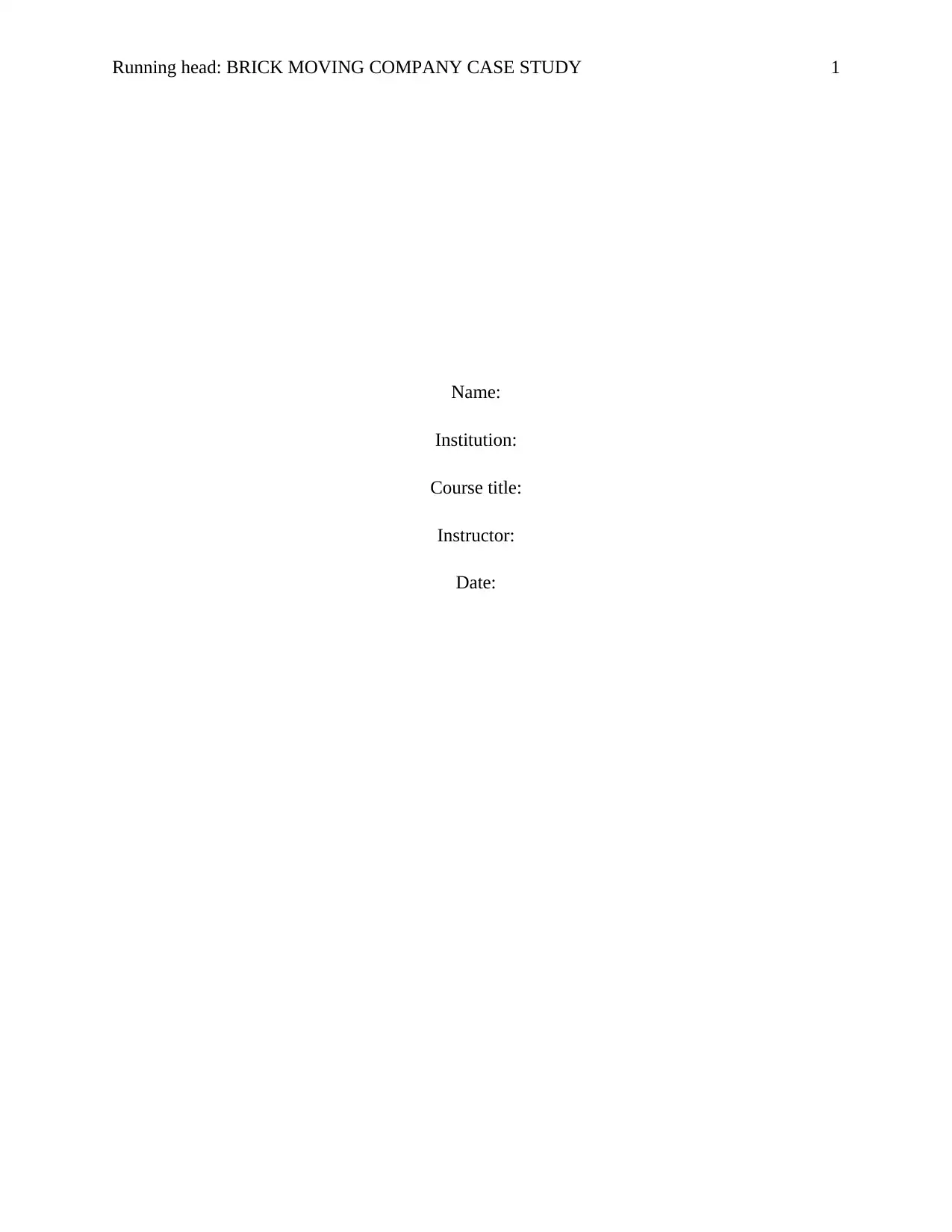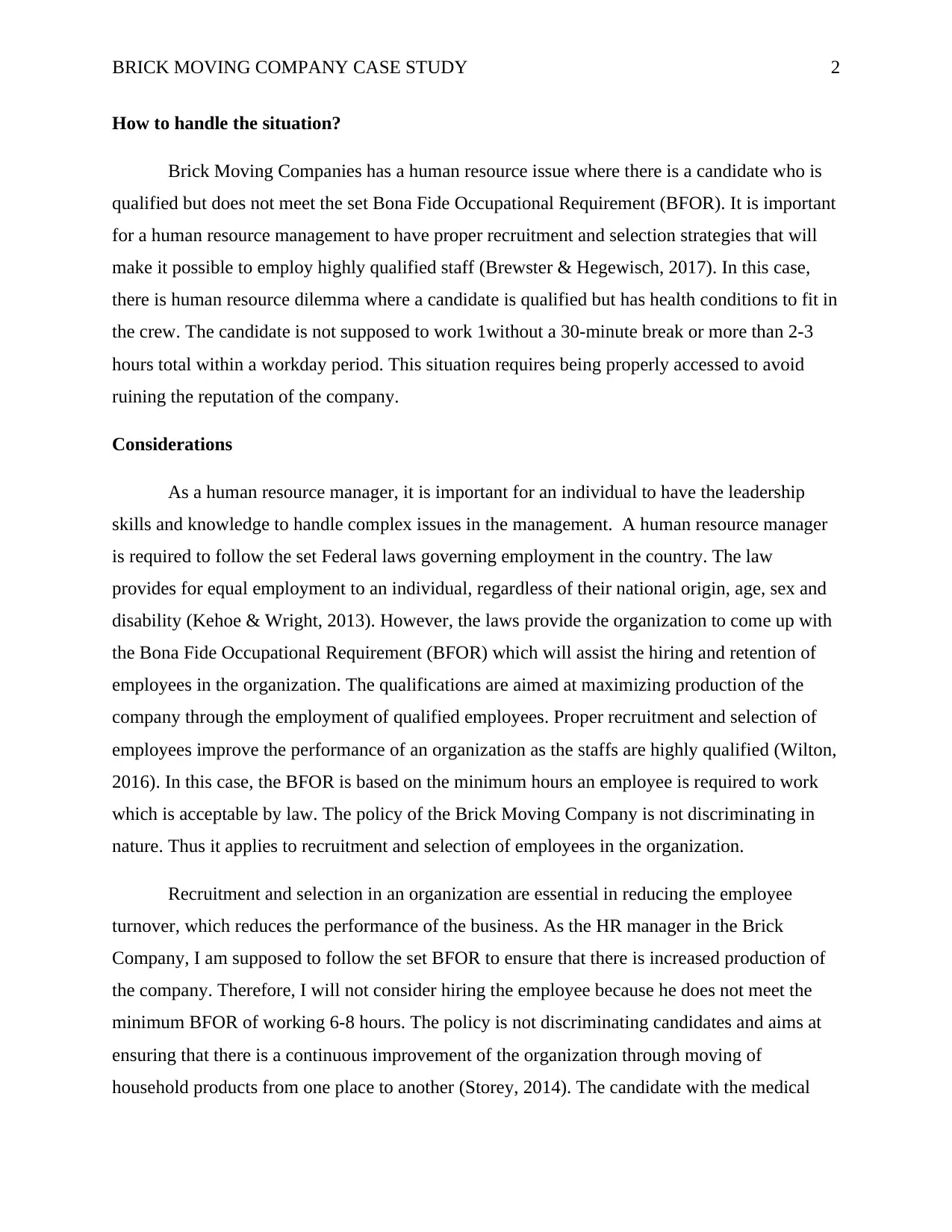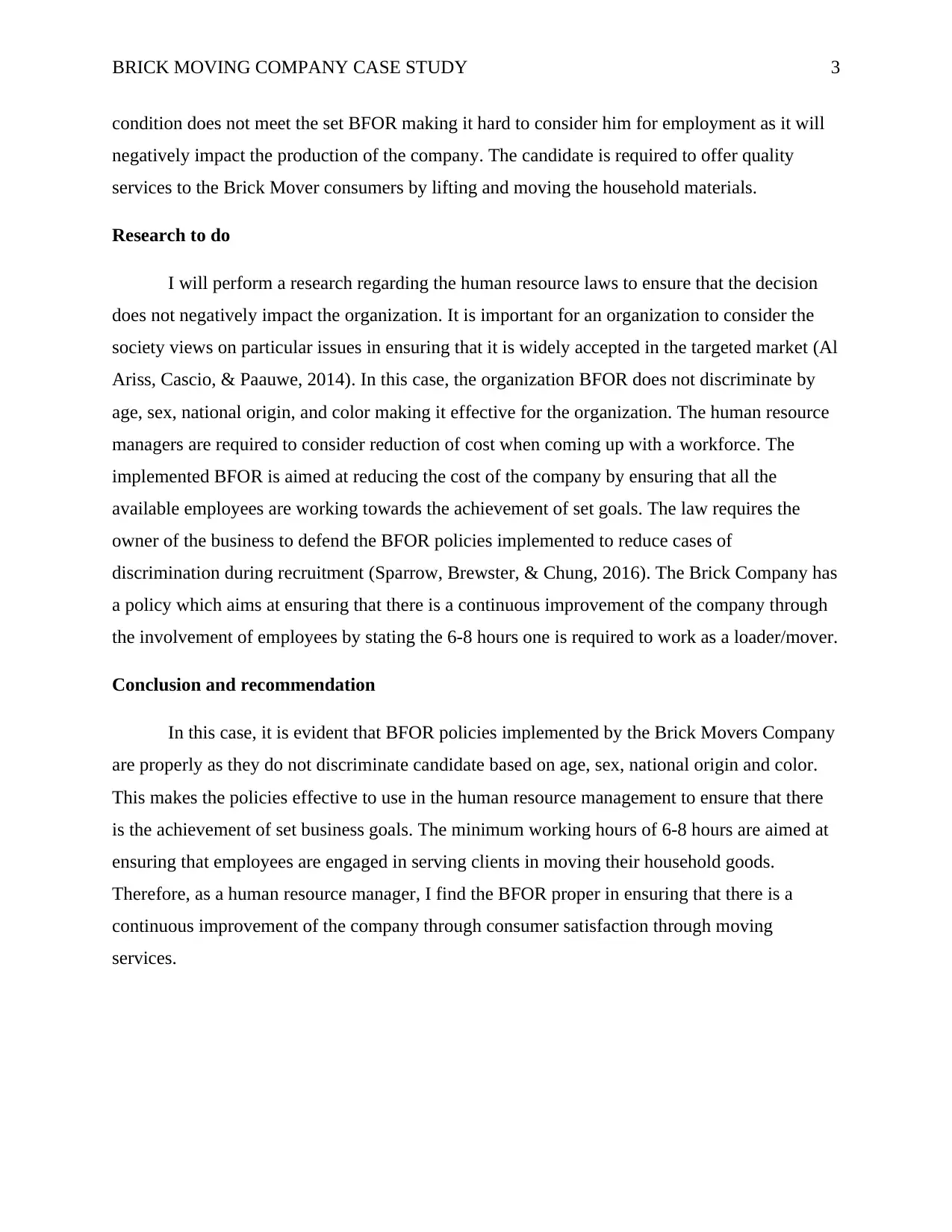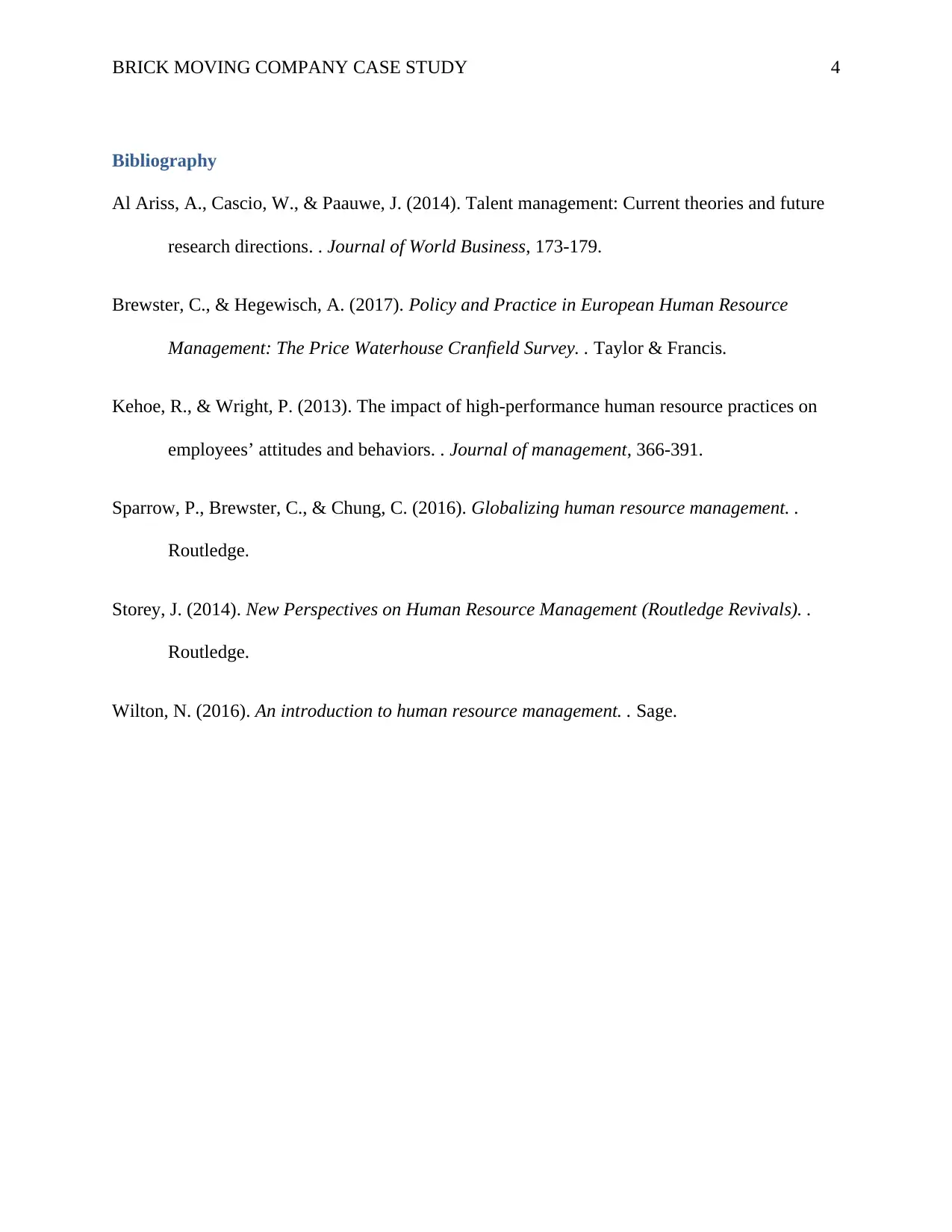Leadership and HR: Brick Moving Company Case Study Analysis
VerifiedAdded on 2020/03/16
|4
|1001
|47
Case Study
AI Summary
This case study examines a human resource dilemma faced by Brick Moving Company, where a qualified candidate does not meet the Bona Fide Occupational Requirement (BFOR) due to health limitations. The analysis explores the importance of proper recruitment and selection strategies in human resource management, emphasizing adherence to federal employment laws and the implementation of BFOR to maximize company production. The HR manager must navigate the conflict between the candidate's qualifications and the company's policy requiring a minimum of 6-8 hours of work, impacting production. The case study recommends research into human resource laws and societal views to ensure the decision's legality and market acceptance. The conclusion supports the BFOR policies, highlighting their effectiveness in achieving business goals and ensuring consumer satisfaction through moving services. The provided bibliography supports the analysis with relevant research and insights into human resource management practices.
1 out of 4










![[object Object]](/_next/static/media/star-bottom.7253800d.svg)